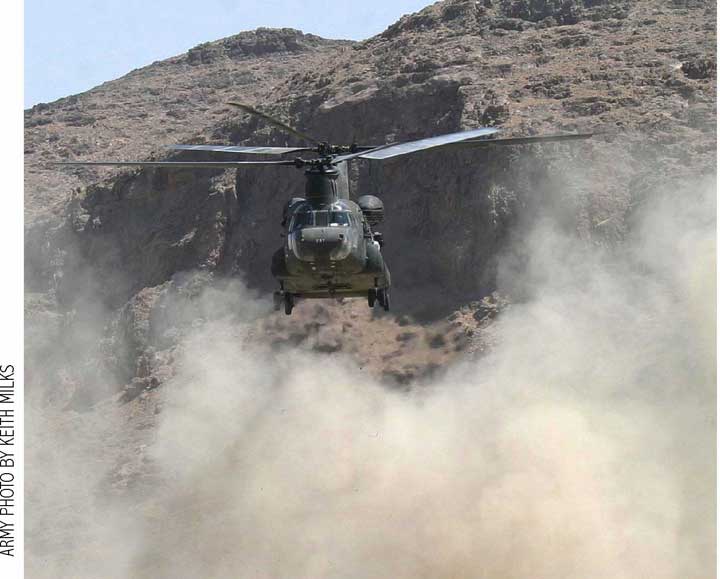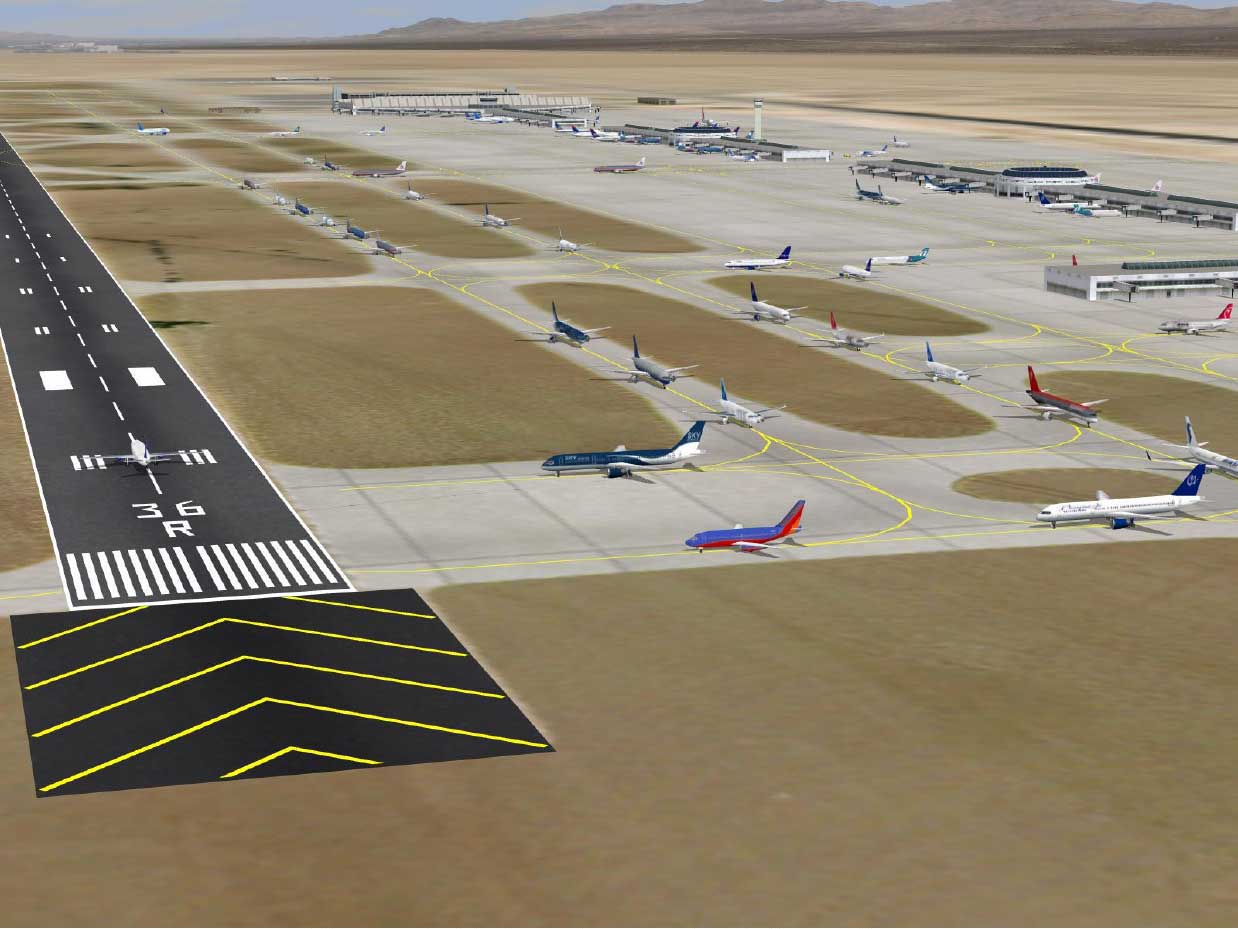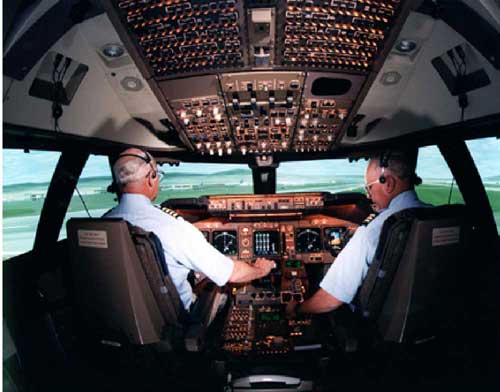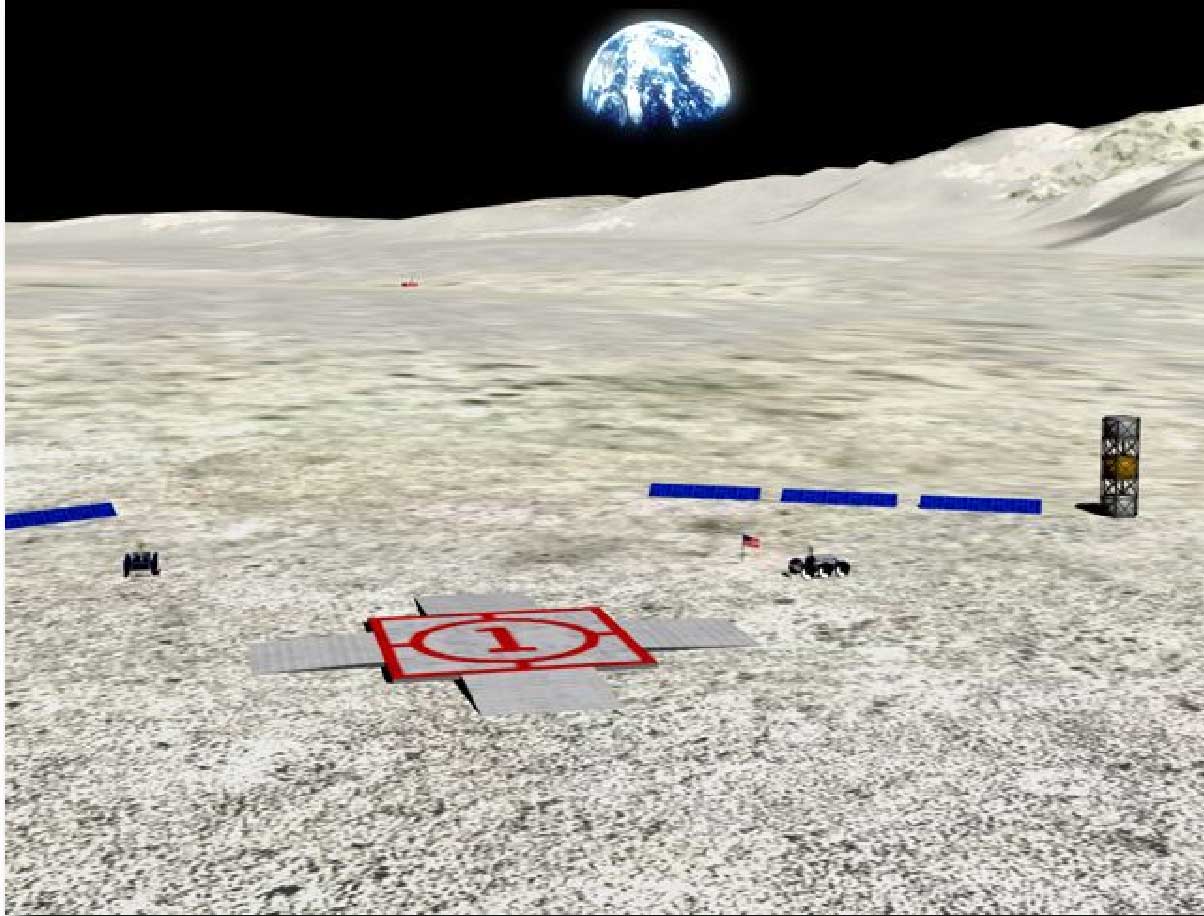
 |
| ||||||||||||||
NASA SimLabs News | |||||||||||||||
|
Newsletter
Scrapbook
|
Volume 7, Issue 3http://www.simlabs.arc.nasa.gov/July 2007TABLE OF CONTENTSWelcome New Subscribers!
1. Better Guidance for Pilots during Brown-outBrown-out can occur when helicopters takeoff or land in dry arid regions where the environment is often dusty or sandy. Excessive dust, sand, and dirt are thrown upward and swirled around the aircraft due to the downwash caused by a spinning rotor. This loss of visibility affects the pilot’s ability to control and stabilize the aircraft at low altitude and also hinders the crew’s situational awareness of the landing zone. Joint efforts among the services are underway to solve or, at a minimum, to mitigate the problem. A Brown-out Symbology Study (BOSS) at Ames’ Vertical Motion Simulator (VMS), sponsored by the US Army Aeroflightdynamics Directorate, recently evaluated a proposed cockpit display for off-airfield, night, helicopter landings in poor visibility conditions caused by brown-out.
Figure 1 is a CH-47 aircraft however, the simulated vehicle was a UH-60A aircraft with minimal flight control augmentation. Experienced test pilots from the services evaluated a test matrix, which consisted of two display configurations and three levels of knowledge of landing site coordinates.
The two display configurations were either a Night Vision Goggle – Head Up Flight Display (Figure 2) or Night Vision Goggle and panel mounted Flight Display. The three possible values of the landing site coordinates were: 1) 3D coordinates of the landing sites are known, 2) 2D coordinates of the landing site are known, or 3) coordinates of the landing site are not known. This study measured pilot performance, workload, and pilot preference for each of the two display configurations. The data quantified any advantages of using 2D coordinates of the landing site for guidance during the approach compared to the case of not knowing the landing site coordinates. Similarly, the study quantified advantages of using 3D coordinates over using 2D coordinates for guidance during the approach. 2. Ivanpah Valley Airfield Alternative Analysis ResultsNASA SimLabs' FutureFlight Central conducted a series of real-time simulations in the spring of 2007 to evaluate two layout alternatives for the proposed Ivanpah Valley Airport. The airport will help alleviate congestion at Las Vegas McCarran International Airport, which can no longer expand because of the existing housing and commercial development that surrounds it.
The real-time simulation provided a unique preview of the efficiency and safety of the designs. Simulation experiments were conducted under anticipated opening day traffic volume, and two future levels up to that forecast for 2025. Experiments stressed the two airfield configurations to determine which will more efficiently accommodate a future continuous and high demand flow of traffic. Data from the simulations depicting opening day traffic volume did not evidence an appreciable benefit between the two alternatives, although controllers favored the widely spaced layout as safer. At the higher traffic level, the data indicated a larger and more consistent differential between the two alternatives. The Closely-Spaced Runway Plan showed a 40% higher average inbound taxi time. Interaction of arrivals and departures for the Closely-Spaced Runway Plan resulted in a nominal average delay of two minutes for arrivals due to runway crossings. Subjective data from the high traffic level scenarios clearly identified higher workload levels and safety concerns for the Closely-Spaced Runway Plan. The air traffic controller participants rated the Widely-Spaced Runway Plan to be more efficient, easy to manage and safe. At the highest traffic level, with continuous peak departures, the Widely Spaced Runway Plan showed a greater ability to handle the demand. The departure rate for the Widely-Spaced Runway Plan was approximately 15 departures per hour higher than for the Closely-Spaced Runway Plan. The average inbound taxi time for the Closely-Spaced Runway Plan was 55% higher than for the Widely-Spaced Runway Plan. Arrival aircraft were delayed nominally 4.5 minutes due to runway crossings on the Closely-Spaced Plan. The complete report is available at IVAAAN Simulation Summary Report. 3. Flight Operations Quality Assurance in TrainingHow do airlines monitor aircrew quality? This question is as old as the airline business. In the last decade a new concept called Flight Operations Quality Assurance (FOQA) was introduced to the air transportation industry and many carriers have embraced the concept. Under the FOQA program, monitors are installed on aircraft for recording numerous flight parameters over a significant number of flights before being downloaded for analysis. The most important part of the program is the anonymity of flight crews. FOQA is a tool used for trending specific aircraft types and fleets to help identify areas, especially during the departure and arrival phases of flight, that might be addressed for safety or efficiency reasons.
NASA, in partnership with United Parcel Services (UPS), has embarked on a project that takes the FOQA theme into the training arena. UPS is training flight crews on NASA’s 747-400 simulator at the SimLabs at Ames Research Center. Part of this training is the Line Operations Flight Training phase (LOFT). This training involves actual flight scenarios from takeoff to arrival under normal flight conditions. NASA staff is collecting the same FOQA data that would be collected on the actual flight during LOFT scenarios. Crew anonymity once again is guaranteed. This data is then available to both NASA and UPS researchers for evaluation. UPS is interested in the de-identified data for both the effectiveness of the initial qualification training as well as trend analysis during recurrent training. NASA scientists are collecting valuable data that will be used in Next Generation Air Transportation System (NextGen) research to include trajectory guidance and 4D approaches. The FOQA data acquisition project is one way NASA is working with new partners to benefit aeronautics and future Air Transportation Systems. 4. NASA Launches Handling Qualities Standards Research for Spacecraft“Handling qualities” describe the ease and precision with which a pilot can execute a flying task and depend upon numerous factors, including vehicle response, guidance cues, and the type of controller. Comprehensive handling qualities standards exist for aircraft, but to date, no such standard has been developed for space vehicles. To this end, NASA has initiated an effort to develop a handling qualities standard for piloted spacecraft, beginning with a Lunar Lander study conducted at Ames’ Vertical Motion Simulator (VMS) in May 2007.
Using an Apollo-era Lunar Lander as both a math model and physical model, pilots began each simulated moon landing at “low gate:” 1350 ft horizontally and 500 ft vertically from the landing site, traveling at 60 ft per second horizontally and –16 ft per second vertically. A high-resolution lunar surface was created as a visual scene and included a landing pad for pilots to target during their descents (Figure 5). During the landing task, test pilots and NASA astronauts (Figure 6) were presented with combinations of vehicle control power (i.e., levels of acceleration) and a heads-down trajectory guidance display (either “on” or “off”) and asked to give Cooper-Harper and Task Load Index ratings upon completion of each set of three runs. This study provided an excellent opportunity to evaluate the vehicle models and collect data for analysis in an important first step toward NASA’s effort to develop a spacecraft handling qualities standard.
5. Thinking of Doing Business with NASA SimLabs?For more information on what we can do for your needs, contact: Thomas Alderete, Assistant Division Chief for
Simulation Facilities Dean Giovannetti, SimLabs Branch Chief
(Acting)
| ||||||||||||||
|
Home | Site
Map | Contact
Us | Latest
News | Links |
About
Us Updated: 07/26/2007 Curator: Rod David Responsible Official: Wayne Momii
| |||||||||||||||





